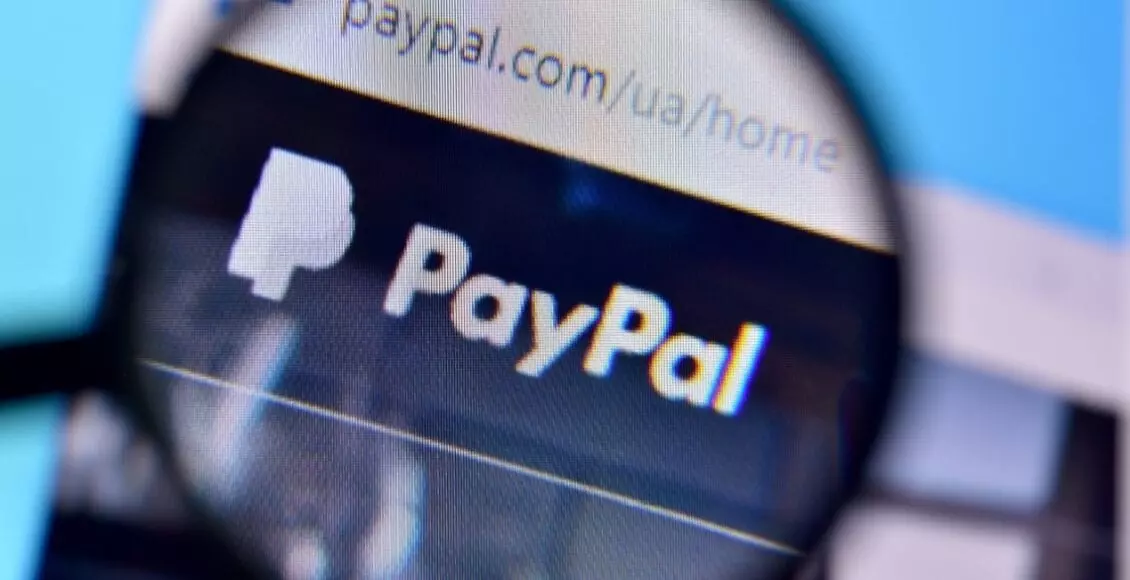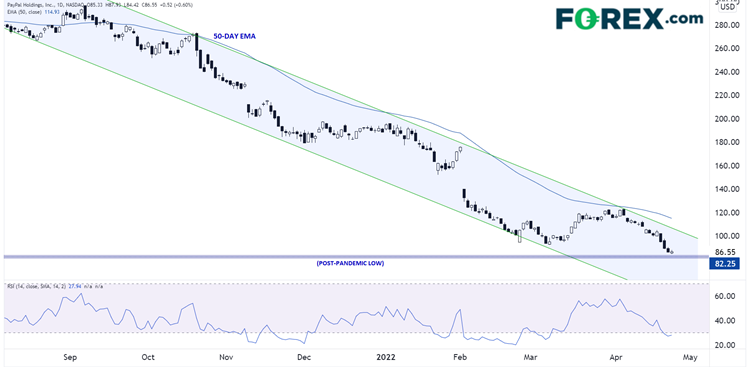Paypal Earnings Overview and PYPL Stock Analysis

Paypal’s (NASDAQ:PYPL) stock price has now dropped more than -70 percent on the stock market to trade below $90 after reaching a high of about $310 in late July.
As consumer trends undoubtedly move against the financial behemoth, PayPal’s income is anticipated to decline by around 30 percent on an annual basis.
When will PayPal release Q1 2022 revenue?
On Wednesday, April 27, 2022, after U.S. trading has ended, PayPal is anticipated to announce its first quarter results.
What do analysts expect from PayPal’s first quarter results?
Zacks reports that experts anticipate PayPal will generate $6.4 billion in revenue and $0.89 EPS.
Overview of PayPal’s results for the first quarter of 2022
PayPal has arguably been one of the most significant names battling the multiple squeeze as merchants shifted from expensive, fast-growing, digitally-enabled names to cheaper names, more profitable stocks linked to the so-called “real economy.” The tightening macro environment has been a hindrance for many pandemic-era darling stocks.
On a more specific level, PayPal’s revenue is predicted to drop by about 30 percent on an annual basis as consumer patterns unquestionably change against the fintech behemoth. PayPal is facing challenges from consumers’ recent shifts toward shopping experiences rather than things, shopping offline rather than online, and spending restraint as a result of inflationary pressures.
The announcement by PayPal’s chief financial officer John Rainey that he intends to quit the firm for a position at Walmart next month is another another setback for the bulls (and probably one of the primary causes of its stock’s sharp decline over the previous two weeks). James Faucette, an analyst with Morgan Stanley, claims that “John Rainey’s departure can be interpreted as a negative signal. It can renew concerns about the business’ capacity to maintain above-market growth and achieve its financial goals. Investors are interested in learning more about Rainey’s succession strategy and any guarantees the business may offer.
On the plus side, PayPal’s price-to-earnings ratio is currently the lowest it has ever been (and is lower than the Nasdaq 100 index), indicating that the stock may now represent a bargain on the stock market if the growth pace picks up.
Finally, PayPal is still battling Block/Square for entry into the bitcoin market. Both payment providers want to make it simple for their frequently youthful customers to buy cryptocurrencies without having to create a brand-new cryptocurrency brokerage account. Bulls anticipate continued acceptance of its bitcoin product as the more conventional payment industry stumbles.
What’s next on the stock market for PYPL shares?
There is only one method to approach the topic: Since nine months ago, PayPal stock has been declining on the stock market. PYPL’s stock price has already dropped more than -70 percent on the stock market to trade below $90 at the time of writing after reaching a high of about $310 in late July.
These include the PYPL stock’s lowest closing price on the stock market during the epidemic and a price that was first attained in January 2018. Only the last three weeks have seen price drops of 30%!
Given the dismal price movement, it is obvious that anticipation for this week’s earnings announcement is at an all-time low.
The potential for a large comeback is indicated by the company’s extreme oversold condition and probable positive divergence with its 14-day RSI signal. If earnings surprise to the upside, the stock may increase sharply.
Paypal (NASDAQ: PYPL) Daily Chart

Tradingview and Stone X as sources
Nevertheless, as it has done since September, the 50-day moving average EMA near $115 will probably limit any profit-driven bounce.
The Q4 2018 lows in the mid-$70s could be rapidly revealed if $82 is broken on a weak report.
Ultimately, for this pandemic-era favourite to restore its momentum on the stock market, an improvement in the underlying macroeconomic environment would be required.
Disclaimer: This report’s data and opinions are offered for general information purposes only; they are not a recommendation to purchase or sell any CFDs or foreign exchange contracts. The author does not guarantee the accuracy or completeness of the information provided here and disclaims all liability for any direct, indirect, or consequential consequences that may arise from the use of this material, even though it was gathered from sources that were thought to be credible.